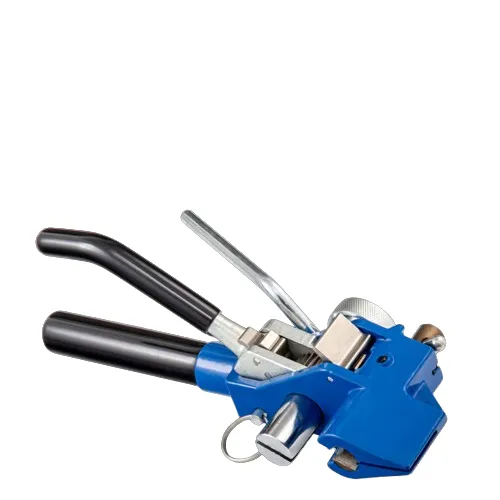
-
 Afrikaans
Afrikaans -
 Albanian
Albanian -
 Amharic
Amharic -
 Arabic
Arabic -
 Armenian
Armenian -
 Azerbaijani
Azerbaijani -
 Basque
Basque -
 Belarusian
Belarusian -
 Bengali
Bengali -
 Bosnian
Bosnian -
 Bulgarian
Bulgarian -
 Catalan
Catalan -
 Cebuano
Cebuano -
 Corsican
Corsican -
 Croatian
Croatian -
 Czech
Czech -
 Danish
Danish -
 Dutch
Dutch -
 English
English -
 Esperanto
Esperanto -
 Estonian
Estonian -
 Finnish
Finnish -
 French
French -
 Frisian
Frisian -
 Galician
Galician -
 Georgian
Georgian -
 German
German -
 Greek
Greek -
 Gujarati
Gujarati -
 Haitian Creole
Haitian Creole -
 hausa
hausa -
 hawaiian
hawaiian -
 Hebrew
Hebrew -
 Hindi
Hindi -
 Miao
Miao -
 Hungarian
Hungarian -
 Icelandic
Icelandic -
 igbo
igbo -
 Indonesian
Indonesian -
 irish
irish -
 Italian
Italian -
 Japanese
Japanese -
 Javanese
Javanese -
 Kannada
Kannada -
 kazakh
kazakh -
 Khmer
Khmer -
 Rwandese
Rwandese -
 Korean
Korean -
 Kurdish
Kurdish -
 Kyrgyz
Kyrgyz -
 Lao
Lao -
 Latin
Latin -
 Latvian
Latvian -
 Lithuanian
Lithuanian -
 Luxembourgish
Luxembourgish -
 Macedonian
Macedonian -
 Malgashi
Malgashi -
 Malay
Malay -
 Malayalam
Malayalam -
 Maltese
Maltese -
 Maori
Maori -
 Marathi
Marathi -
 Mongolian
Mongolian -
 Myanmar
Myanmar -
 Nepali
Nepali -
 Norwegian
Norwegian -
 Norwegian
Norwegian -
 Occitan
Occitan -
 Pashto
Pashto -
 Persian
Persian -
 Polish
Polish -
 Portuguese
Portuguese -
 Punjabi
Punjabi -
 Romanian
Romanian -
 Russian
Russian -
 Samoan
Samoan -
 Scottish Gaelic
Scottish Gaelic -
 Serbian
Serbian -
 Sesotho
Sesotho -
 Shona
Shona -
 Sindhi
Sindhi -
 Sinhala
Sinhala -
 Slovak
Slovak -
 Slovenian
Slovenian -
 Somali
Somali -
 Spanish
Spanish -
 Sundanese
Sundanese -
 Swahili
Swahili -
 Swedish
Swedish -
 Tagalog
Tagalog -
 Tajik
Tajik -
 Tamil
Tamil -
 Tatar
Tatar -
 Telugu
Telugu -
 Thai
Thai -
 Turkish
Turkish -
 Turkmen
Turkmen -
 Ukrainian
Ukrainian -
 Urdu
Urdu -
 Uighur
Uighur -
 Uzbek
Uzbek -
 Vietnamese
Vietnamese -
 Welsh
Welsh -
 Bantu
Bantu -
 Yiddish
Yiddish -
 Yoruba
Yoruba -
 Zulu
Zulu


नवम्बर . 09, 2024 15:15 Back to list
Measuring Wheel for Winch Sand Anchor Applications and Efficiency Analysis
Measuring Wheels The Unsung Heroes in Winching and Sand Anchoring
When it comes to outdoor activities such as off-roading, beach camping, or even construction work, the importance of accuracy cannot be overstated. One often overlooked tool that plays a critical role in ensuring precision in distance measurement is the measuring wheel. Particularly in contexts involving winching and sand anchoring, measuring wheels are invaluable in planning, executing, and ensuring safety in various operations.
Understanding the Measuring Wheel
A measuring wheel, also known as a distance measuring wheel or surveyor’s wheel, is a tool designed to measure distances with ease and accuracy. It typically consists of a wheel mounted on a long handle that is pushed along the ground. As the wheel rolls, it counts the revolutions and translates that into distance, often shown on an attached counter. This simple yet effective design makes it a favorite among professionals and outdoor enthusiasts alike.
Importance in Winching Scenarios
In winching operations—whether it is for recovery of stuck vehicles or hauling heavy loads—precise measurements are essential. The distance from the anchor point to the winching vehicle determines the necessary length of the winch cable and the anchoring technique to be used. A measuring wheel allows operators to quickly gauge this distance, facilitating better planning and avoiding potentially dangerous situations caused by miscalculation.
When setting up a winch, you must also consider the angle of pull. Misjudging this angle can lead to inefficient pulling and even equipment failure. Using a measuring wheel helps in plotting a straight line from the winching point to the anchor, allowing for a truer angle and better results.
Sand Anchoring A Special Case
winch sand anchor - measuring wheel

Sand can be one of the trickiest surfaces to work with when it comes to anchoring. The shifting nature of sand makes it crucial to ensure that anchors are placed in optimal positions. Measuring wheels assist in identifying appropriate distances from the vehicle to the anchoring site where sand might provide the best resistance.
Moreover, when using sand anchors, it’s often necessary to create multiple potential anchoring points. Setting up multiple anchors can further ensure that the vehicle remains secure within shifting sands. A measuring wheel allows for angry setups without the need for complicated calculations or cumbersome measuring tapes, making the process both quicker and safer.
Accuracy and Efficiency Combined
Among the numerous benefits of using measuring wheels is their unmatched combination of accuracy and efficiency. Unlike traditional measuring methods, such as tapes or rulers, which require stopping to take measurements regularly, measuring wheels allow for continuous monitoring as one moves. This is particularly beneficial in expansive outdoor settings where distances can be misleadingly vast.
Furthermore, the lightweight and portable design of measuring wheels makes them easy to transport, so they can accompany you on any outdoor adventure or job site. They are generally robust and can be used on various terrains, including asphalt, concrete, and, of course, sand.
Conclusion
In the dynamic world of winching and sand anchoring, the measuring wheel is more than just a simple tool; it is a crucial component that enhances both efficiency and safety. Its ability to accurately measure distances can prevent costly errors and accidents. For anyone involved in outdoor activities that involve winching or adjusting anchors in sandy or variable terrains, investing in a measuring wheel is undoubtedly a wise decision. As outdoor adventurers or construction professionals, our ability to secure success often hinges on the precision of our measurements—and so, the measuring wheel truly deserves recognition as an MVP in our toolkit.
Latest news
duct-rodders-and-conduit-rod-tools
NewsAug.22,2025
ratchet-pullers-and-wire-tightening-tools
NewsAug.22,2025
chain-ratchet-pullers-and-hoist-solutions
NewsAug.22,2025
telescopic-hot-stick-for-electrical-and-high-voltage-use
NewsAug.22,2025
cable-clamp-and-insulated-cable-clamp-systems
NewsAug.22,2025
duct-rodder-conduit-rodder-and-cable-solutions
NewsAug.22,2025








